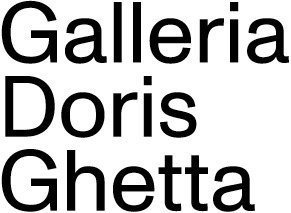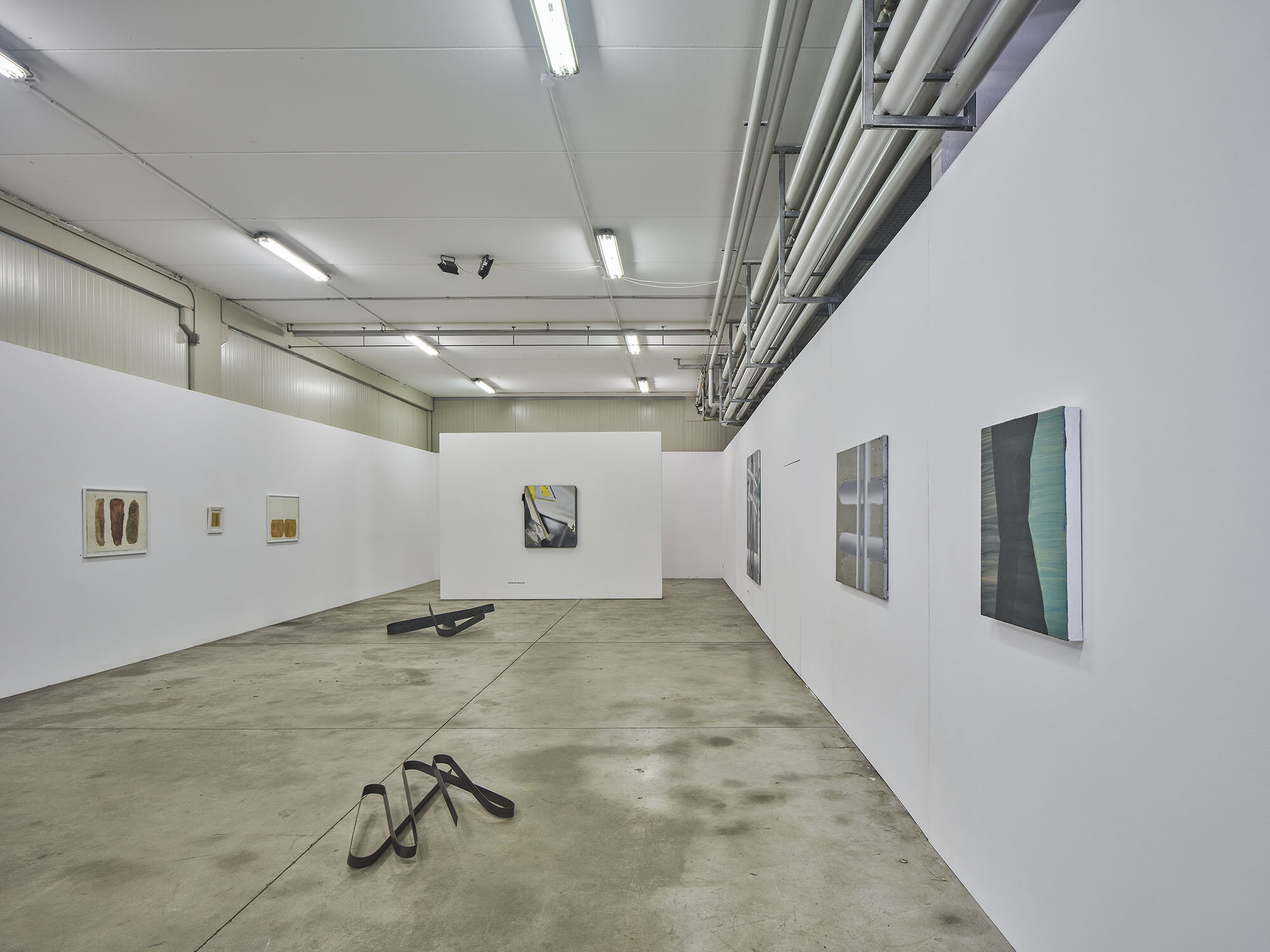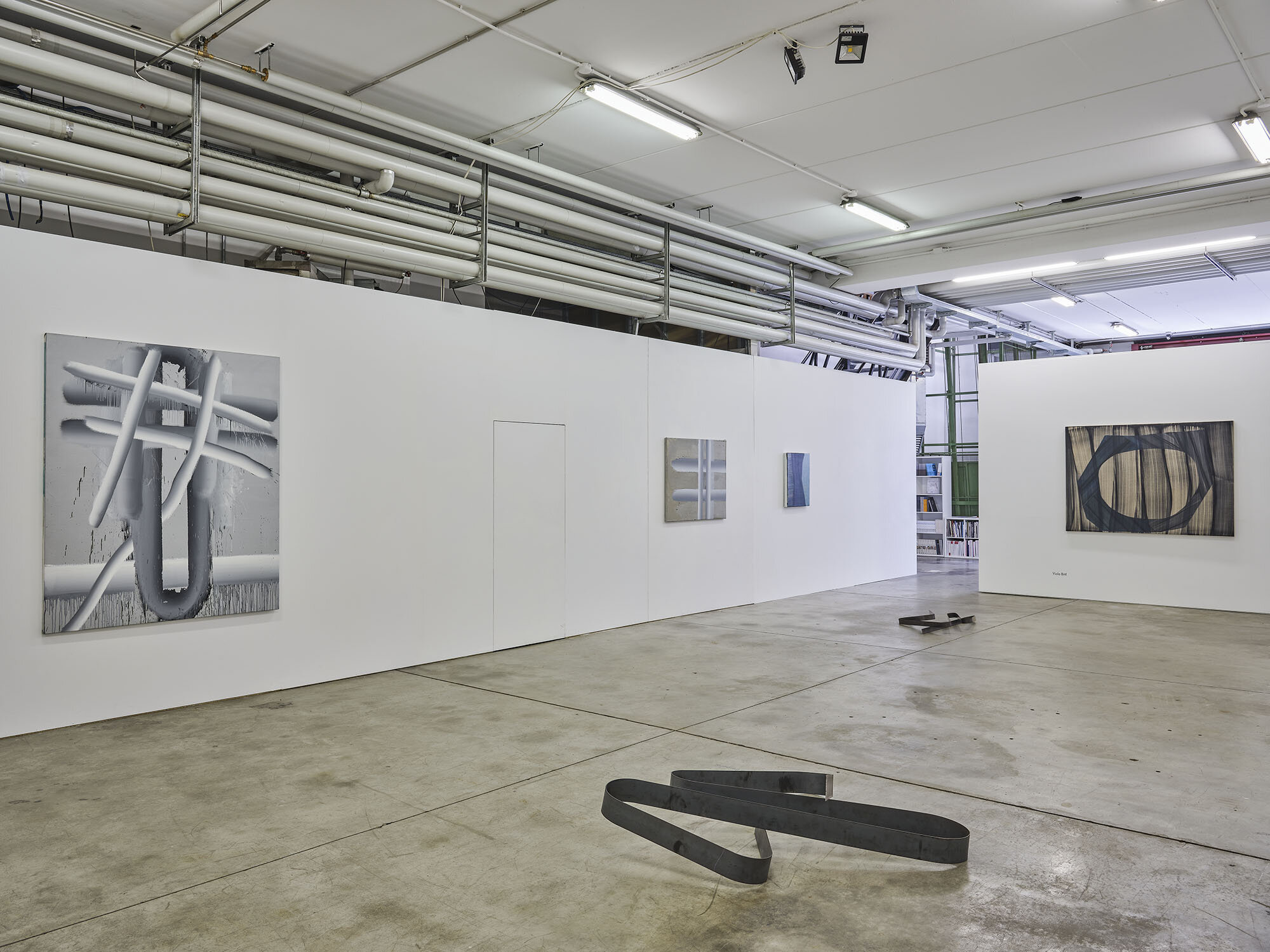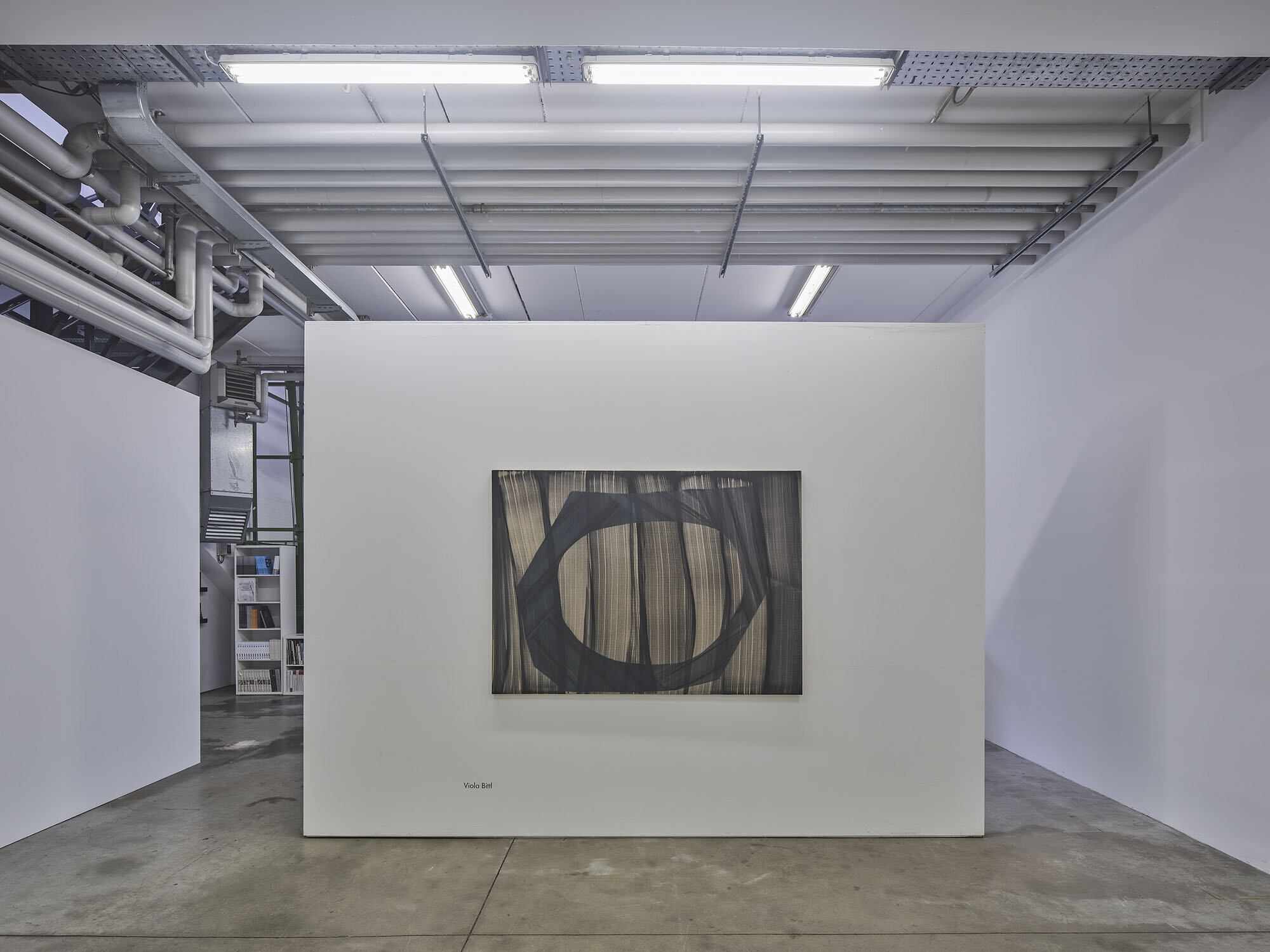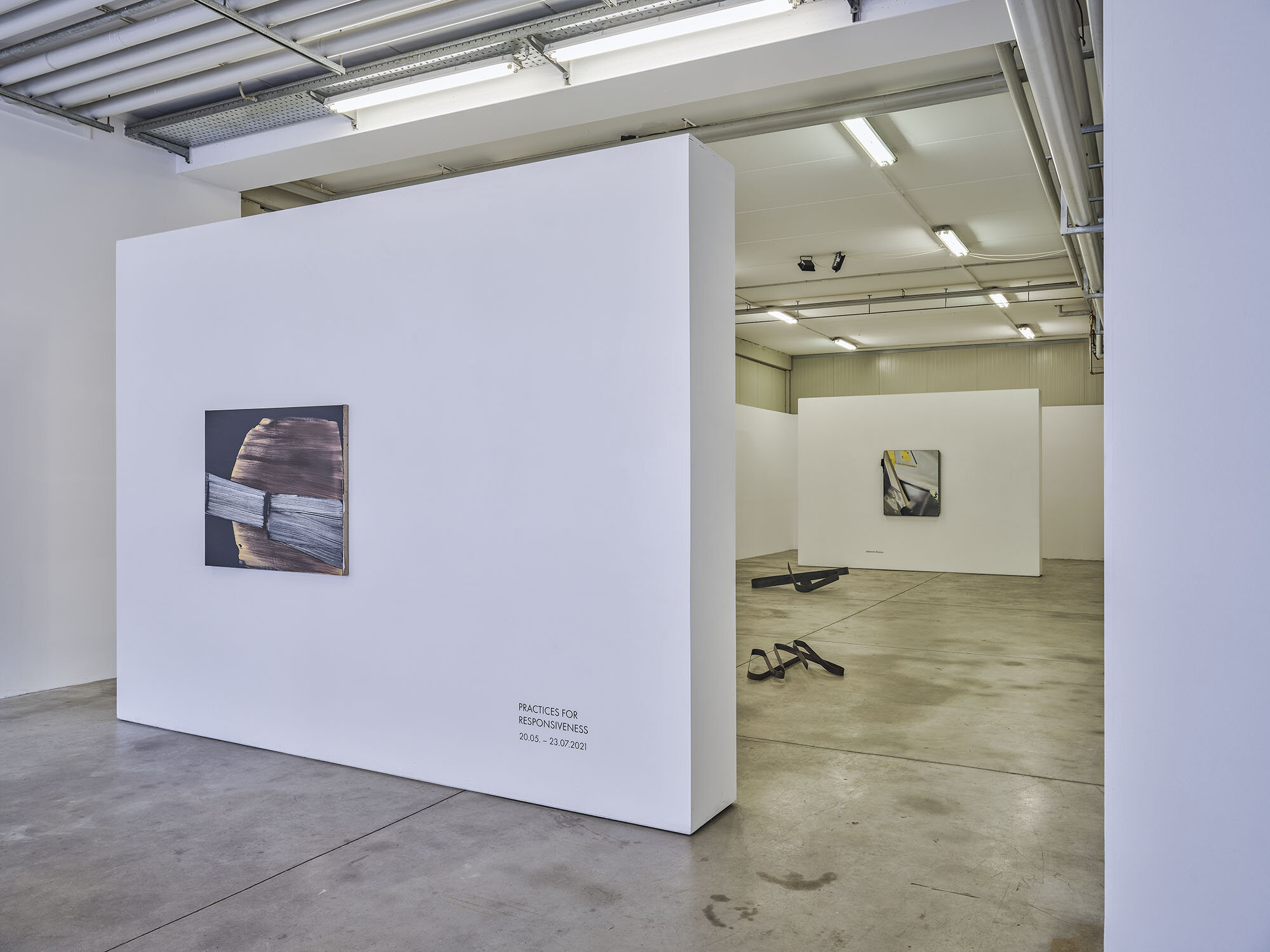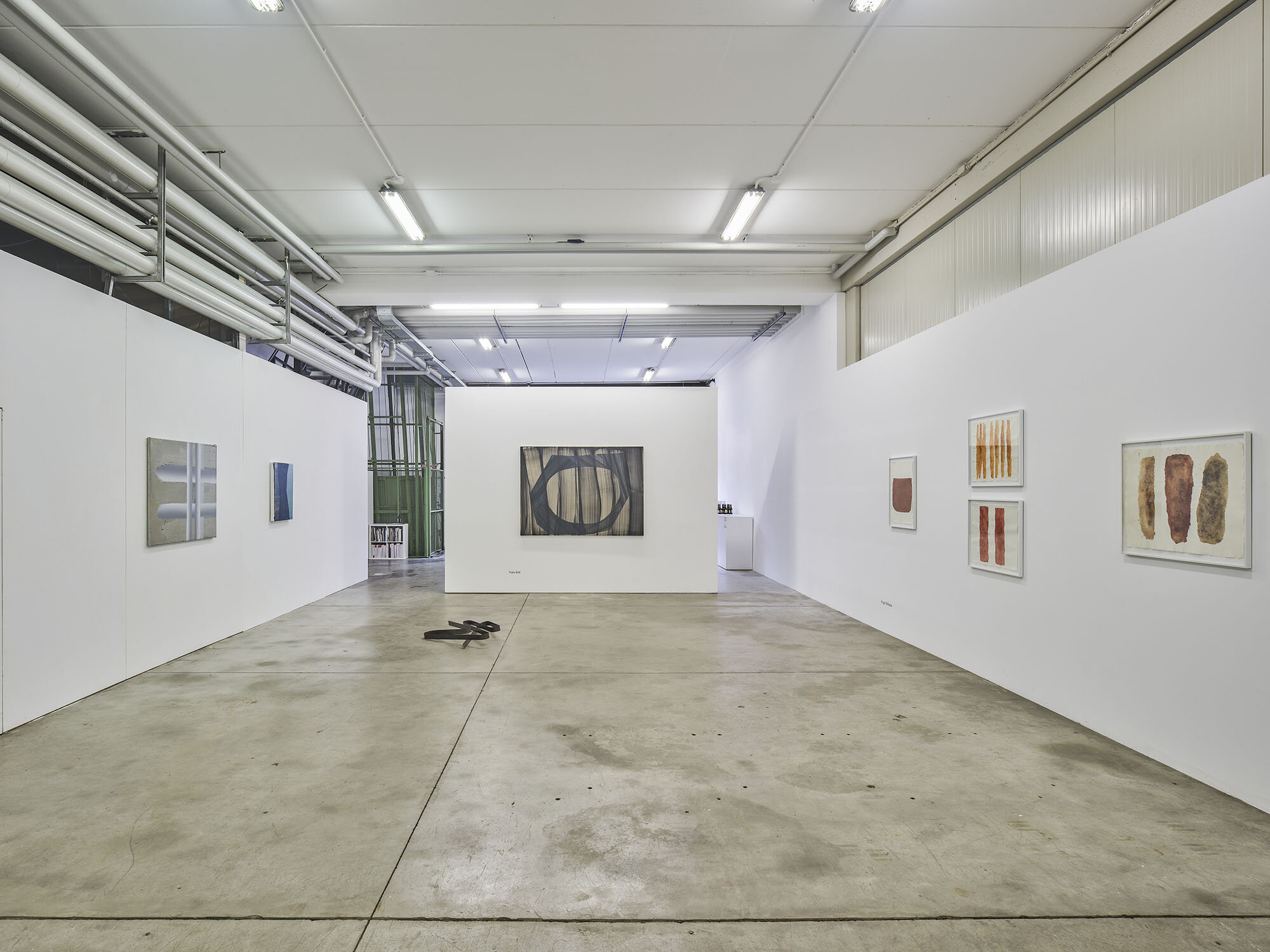PRACTICES FOR RESPONSIVENESS
Michele Bernardi, Viola Bittl,
Johannes Bosisio, Leonardo Silaghi,
Hugo Vallazza
Galleria Doris Ghetta is delighted to present Practices For Responsiveness, a collective exhibition that explores the relationship between artists and the reality in which they operate, with special attention to their ability to react and respond to the concerns of the age they live in. On show are the works of Michele Bernardi, Viola Bittl, Johannes Bosisio, Leonardo Silaghi and Hugo Vallazza, five artists from different generations and different geographical and cultural contexts who respond to the stimuli of external reality – be it physical and material or a theoretical space of artistic representation – with practices grounded in the way they listen to their own interior landscapes.
Hugo Vallazza (Ortisei, Italy 1955– 1997), an artist who died prematurely, developed his style between the 1970s and 1990s, years of economic growth and extreme consumerism. He responded to a vision of art considered as a market commodity, and consumed as such by the public, by forcefully reasserting the role of art as a form of intellectual existence and resistance, a dimension that is out of the spotlight and removed from all excess. In the face of a modernity that generates emptiness and disorientation, Vallazza’s monochromes declare their refusal to accept the rules of the game and claim their right to be low-key and unrefined as opposed to over-the-top and slick. They act as opaque systems, not pondered and studied but instinctive and intuitive. Vallazza’s work testifies to a detached vision of reality that refuses both to yield to the idyllic promise of a rejoining of society with nature and to feel sorry for itself for the hiatus created between humans and the space they live in: on the contrary, it suggests new points of view that seek to better comprehend who we are and how we inhabit that space.
Johannes Bosisio (Bolzano, Italy, 1994) adopts a different approach to his own contemporaneity, one of fascination and curiosity. Keen to understand forms of interaction between human beings and machines, Bosisio casts about for waste metal and car body parts which he refashions and reinterprets on the surface of the canvas. Steel and chrome, in fact, are materials with a perfect smooth, shiny texture that embody our modernity to the full. The combination created by the interaction between human and machine gives life to cyborgs, humans with boosted physical abilities that enter into symbiosis with their technological offshoots which, like, prostheses, become extensions of their bodies. Influenced by the mechanical, repetitive sounds of electronic music and dystopic novels, Bosisio investigates subjects such as consumerism, technology and machine fetishism with a hyperrealist style filled with graphic elements.
Machines, birds and ice cream are just some of the figures featured in the most recent work of Leonardo Silaghi (Satu-Mare, Romania, 1987), a variety of diverse subjects mirroring the artist’s desire to move dynamically through everyday life. However, it is the world of ideas behind concrete reality that particularly fascinates Silaghi. His subjects are first and foremost mental spaces, surfaces behind which meanings, ideas and thoughts are layered. In Cross, for example, the religious element is represented by essential compositional lines and reflects on the spiritual and contemplative dimension of the object. Through a performative painting, Silaghi conceives artistic practice as a learning process in which the artist learns and becomes aware through and thanks to the act of painting.
The German artist Viola Bittl (Eichstätt, Germany, 1980) works on the possibilities offered by abstract painting by investigating the relationships between figure and ground in the pictorial space. Particularly interested in the ideas and reductive formal language of modern art as well as in the sensualisation of simple forms through painting, Bittl pursues an artistic research which leads her work to figures that change according to the surfaces and surfaces that both reveal and conceal at the same time, in a network of relationships that extends underground. The result is figure-ground paintings in which figures, partially absent, nevertheless remain omnipresent. They do not tell stories but arise from ideas or feelings to become attitudes, states or conditions.
If Vallazza and Bosisio relate directly or indirectly to the outside world, whereas Silaghi and Bittl look to the artistic tools with which we relate with the world, Michele Bernardi (Bolzano, Italy, 1959) takes a step back to look to the observer and the tools with which he or she sees and thinks of the world. Working above all with wrought iron, Bernardi produces sculptural installations that through the titles or the sculptures themselves represent words that leave the mental space of thought to occupy a three-dimensional space. Keen to understand the complex interaction between the mechanisms of vision and those of thought, the artist muses on the primacy that we tend to attribute to language and ideas, to the detriment of our eyes. Bernardi brings to light what is normally neither visible nor tangible – thoughts, words – to reflect on the way in which we perceive, think and interpret the world.
